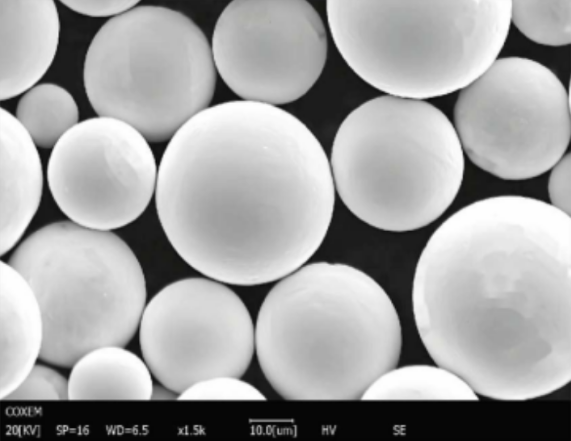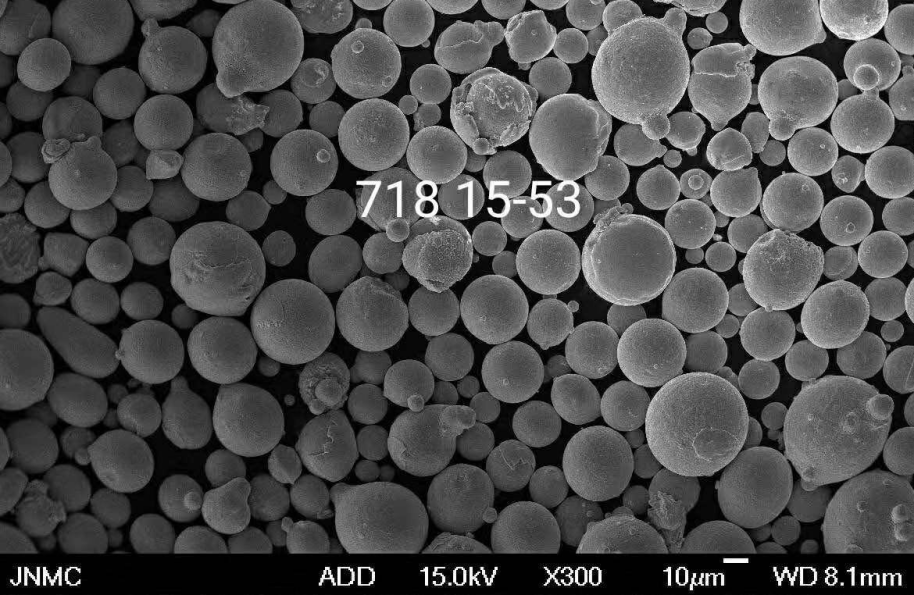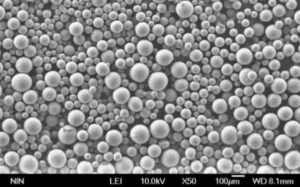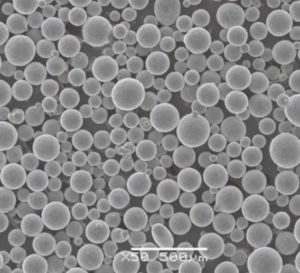Einführung in die Metallbinder-Jet-Lösungen
Die Welt der Fertigung hat sich mit dem Aufkommen der additiven Fertigung, allgemein bekannt als 3D-Druck, seismisch verändert. In diesem Bereich erweist sich das Jetten von Metallbindern als eine der vielversprechendsten und vielseitigsten Technologien. Aber was genau ist ein Metallbinder-Jet-Lösungund warum schlägt es in Branchen von der Luft- und Raumfahrt bis zum Schmuckbereich Wellen?
Metallbindemittel-Jetting ist eine Art der additiven Fertigung, bei der ein Bindemittel selektiv Schicht für Schicht auf ein Bett aus Metallpulver aufgebracht wird, um ein festes Teil zu formen. Im Gegensatz zu anderen 3D-Druckverfahren sind keine hohen Temperaturen oder Laserstrahlen erforderlich, um das Material zu verschmelzen. Stattdessen werden durch das Bindemittel und die anschließende Sinterung robuste Metallteile hergestellt. Dieses Verfahren eröffnet eine Welt der Möglichkeiten in Bezug auf Geschwindigkeit, Kosteneffizienz und Materialflexibilität.
In diesem umfassenden Leitfaden gehen wir auf die Feinheiten von Metallbindemittel-Strahl-Lösungen ein, von den verfügbaren Metallpulvertypen bis hin zu den Feinheiten ihrer Zusammensetzung, Eigenschaften und Anwendungen. Wir gehen auch auf spezifische Modelle von Metallpulvern, ihre Spezifikationen, Lieferanten und einen gründlichen Vergleich ihrer Vorteile und Grenzen ein. Am Ende dieses Artikels werden Sie ein solides Verständnis dafür haben, warum Metallbindemittel-Strahl-Lösungen in der modernen Fertigung eine entscheidende Rolle spielen.
Übersicht der Metallbinder-Jet-Lösungen
Vereinfacht ausgedrückt ist das Metallbindemittel-Jetting eine Form des 3D-Drucks, bei der Metallpulver und ein Bindemittel verwendet werden, um komplexe Metallteile herzustellen. Bei diesem Verfahren wird eine dünne Schicht Metallpulver auf eine Bauplattform aufgetragen, woraufhin ein Druckkopf selektiv ein Bindemittel aufbringt, das die Pulverpartikel miteinander verklebt. Dieser Vorgang wird Schicht für Schicht wiederholt, bis das Teil vollständig geformt ist. Nach dem Druck wird das Teil einem Aushärtungsprozess unterzogen, um das Bindemittel zu härten, und anschließend gesintert, um die Metallpartikel miteinander zu verschmelzen, so dass ein vollständig dichtes Metallteil entsteht.
Diese Technologie hat mehrere entscheidende Vorteile gegenüber herkömmlichen Fertigungsmethoden, darunter die Möglichkeit, komplizierte Geometrien herzustellen, die mit konventionellen Verfahren unmöglich oder extrem teuer wären. Darüber hinaus ist das Metallbindemittel-Jetting schneller und kostengünstiger für die Herstellung kleiner bis mittelgroßer Chargen von Teilen.

Zusammensetzung der Metallbinder-Jet-Lösungen
Die Zusammensetzung einer Metallbinder-Jet-Lösung ist entscheidend für die Qualität, Festigkeit und Haltbarkeit des Endprodukts. Es werden verschiedene Arten von Metallpulvern verwendet, die jeweils spezifische Eigenschaften aufweisen, die sie für verschiedene Anwendungen geeignet machen. Im Folgenden finden Sie einen detaillierten Überblick über die gängigen Metallpulver, die beim Binder Jetting verwendet werden, ihre Zusammensetzung und ihre Eigenschaften.
| Metall-Pulver | Zusammensetzung | Merkmale | Anwendungen |
|---|---|---|---|
| Rostfreier Stahl 316L | Eisen, Chrom, Nickel, Molybdän | Korrosionsbeständig, gute Festigkeit, Duktilität | Luft- und Raumfahrt, medizinische Geräte, Automobilkomponenten |
| Inconel 625 | Nickel, Chrom, Molybdän, Niob | Hochtemperaturbeständigkeit, korrosionsbeständig | Luft- und Raumfahrt, chemische Verarbeitung, Schiffsindustrie |
| Kupfer | Kupfer | Ausgezeichnete elektrische und thermische Leitfähigkeit | Elektrische Bauteile, Wärmetauscher, Dekorationsartikel |
| Titan Ti6Al4V | Titan, Aluminium, Vanadium | Hohe Festigkeit im Verhältnis zum Gewicht, korrosionsbeständig | Luft- und Raumfahrt, medizinische Implantate, Automobilrennsportteile |
| Werkzeugstahl M2 | Eisen, Wolfram, Molybdän, Chrom, Vanadium | Hohe Härte, Verschleißfestigkeit, Zähigkeit | Schneidwerkzeuge, Formen, Matrizen |
| Kobalt-Chrom | Kobalt, Chrom, Molybdän | Biokompatibilität, korrosionsbeständig, verschleißfest | Medizinische Implantate, zahnmedizinische Geräte, Turbinenschaufeln |
| Nickellegierung 718 | Nickel, Chrom, Eisen, Molybdän | Hohe Festigkeit, oxidationsbeständig, schweißbar | Düsentriebwerke, Stromerzeugungsturbinen, Kernreaktoren |
| Aluminium AlSi10Mg | Aluminium, Silizium, Magnesium | Geringes Gewicht, gute Festigkeit, Bearbeitbarkeit | Automobilteile, Luft- und Raumfahrtkomponenten, Unterhaltungselektronik |
| Bronze | Kupfer, Zinn | Gute Verschleißfestigkeit, Bearbeitbarkeit, ästhetische Wirkung | Lager, Buchsen, Skulpturen, Musikinstrumente |
| Eisen | Eisen | Hohe Festigkeit, magnetische Eigenschaften, kostengünstig | Strukturbauteile, Automobilteile, magnetische Geräte |
Jedes dieser Pulver hat seine eigenen Vorzüge, sei es die Korrosionsbeständigkeit von Edelstahl oder das geringe Gewicht von Aluminium. Die Wahl des Metallpulvers hängt weitgehend von den spezifischen Anforderungen der Anwendung ab, z. B. von der Notwendigkeit hoher Festigkeit, thermischer Stabilität oder Biokompatibilität.
Merkmale von Metallbinder-Jet-Lösungen
Das Verständnis der Eigenschaften des Metallbinderstrahlens ist der Schlüssel zur Nutzung seines vollen Potenzials. Das Verfahren umfasst mehrere Schritte, von denen jeder einzelne fein abgestimmt werden kann, um Teile mit bestimmten Eigenschaften herzustellen. Schauen wir uns diese Eigenschaften einmal genauer an.
Schichtdicke
Beim Jetten von Metallbindern spielt die Schichtdicke eine entscheidende Rolle für die Oberflächengüte und die Genauigkeit des fertigen Teils. In der Regel liegt die Schichtdicke zwischen 50 und 200 Mikron. Dünnere Schichten führen zu glatteren Oberflächen und präziseren Details, können aber die Druckzeit erhöhen.
Druckgeschwindigkeit
Das Metallbindemittel-Jetting ist im Vergleich zu anderen additiven Fertigungsverfahren für seine hohe Druckgeschwindigkeit bekannt. Das liegt daran, dass das Metallpulver während des Druckvorgangs nicht geschmolzen oder verschmolzen wird, was eine schnellere Schichtabscheidung ermöglicht.
Oberflächengüte
Die Oberflächengüte von Teilen, die mit dem Metallbinderstrahlverfahren hergestellt werden, ist im Allgemeinen gut, kann aber eine Nachbearbeitung, wie z. B. Polieren oder Bearbeiten, erfordern, um eine spiegelglatte Oberfläche zu erzielen. Das Bindemittel und der Pulvertyp sowie die Schichtdicke beeinflussen die Oberflächenqualität.
Materialeigenschaften
Die Materialeigenschaften von bindergespritzten Teilen sind mit denen von traditionell hergestellten Teilen vergleichbar, insbesondere nach dem Sintern. Eigenschaften wie Zugfestigkeit, Härte und Wärmeleitfähigkeit werden weitgehend durch das verwendete Metallpulver und den Sinterprozess bestimmt.
Komplexe Geometrien
Eines der herausragenden Merkmale des Metallbinderstrahlens ist die Fähigkeit, hochkomplexe Geometrien herzustellen, die mit herkömmlichen Fertigungsmethoden unmöglich oder zu kostspielig wären. Dazu gehören komplizierte Innenkanäle, Gitterstrukturen und Überhänge, ohne dass Stützstrukturen erforderlich sind.
Kosteneffizienz
Das Metallbindemittel-Jetting ist bei kleinen bis mittelgroßen Produktionsserien im Vergleich zu herkömmlichen Verfahren wie CNC-Bearbeitung oder Gießen kostengünstiger. Das Fehlen von Werkzeugen und die Möglichkeit, mehrere Teile in einem einzigen Druckauftrag herzustellen, senken die Kosten weiter.
| Charakteristisch | Einzelheiten |
|---|---|
| Schichtdicke | 50-200 Mikrometer |
| Druckgeschwindigkeit | Hoch, kein Schmelzen erforderlich |
| Oberflächengüte | Gut, erfordert möglicherweise Nachbearbeitung |
| Materialeigenschaften | Vergleichbar mit der traditionellen Herstellung, abhängig von Pulver und Sinterung |
| Komplexe Geometrien | Ausgezeichnete Fähigkeit, keine Stützstrukturen erforderlich |
| Kosteneffizienz | Hoch, vor allem bei kleinen bis mittleren Produktionsmengen |
Vorteile von Metallbinder-Jet-Lösungen
Das Jetten von Metallbindemitteln bringt mehrere Vorteile mit sich, die es zu einer attraktiven Option für eine Vielzahl von Branchen machen. Lassen Sie uns diese Vorteile im Detail erkunden.
Geschwindigkeit und Effizienz
Einer der Hauptvorteile des Binder-Jetting-Verfahrens ist seine Geschwindigkeit. Im Gegensatz zu anderen 3D-Metalldruckverfahren, bei denen jede Schicht geschmolzen und verfestigt werden muss, können beim Binder Jetting ganze Schichten auf einmal gedruckt werden. Dies verkürzt die Druckzeiten erheblich und ermöglicht eine schnellere Fertigstellung der Teile.
Flexibles Material
Das Metallbindemittel-Jetting ist mit einer breiten Palette von Metallpulvern kompatibel und gibt den Herstellern die Flexibilität, das beste Material für ihre spezifischen Anforderungen zu wählen. Ob rostfreier Stahl für Korrosionsbeständigkeit oder Kupfer für elektrische Leitfähigkeit, es gibt ein passendes Metallpulver für jeden Bedarf.
Kosteneffiziente Produktion
Bei kleinen bis mittleren Produktionsserien ist das Metallbindemittel-Jetting kostengünstiger als herkömmliche Herstellungsverfahren. Die Möglichkeit, mehrere Teile in einer einzigen Charge zu drucken, ohne dass teure Werkzeuge oder Formen benötigt werden, senkt die Kosten weiter.
Hohe Detailgenauigkeit und Präzision
Das Metallbindemittelstrahlverfahren eignet sich hervorragend für die Herstellung von Teilen mit komplizierten Details und hoher Genauigkeit. Dies ist besonders nützlich für Anwendungen, bei denen es auf Präzision ankommt, wie z. B. bei Komponenten für die Luft- und Raumfahrt oder bei medizinischen Geräten.
Umweltfreundlich
Im Vergleich zu subtraktiven Fertigungsverfahren fällt beim Metallbinderstrahlen weniger Abfall an. Da es sich um ein additives Verfahren handelt, wird das Material nur dort eingesetzt, wo es benötigt wird, was den Gesamtverbrauch an Ressourcen reduziert.
| Vorteil | Erläuterung |
|---|---|
| Geschwindigkeit und Effizienz | Druckt ganze Schichten auf einmal und verkürzt so die Druckzeit |
| Flexibles Material | Kompatibel mit verschiedenen Metallpulvern |
| Kosteneffiziente Produktion | Kein Bedarf an teuren Werkzeugen oder Gussformen |
| Hohe Detailgenauigkeit und Präzision | Produziert komplizierte Teile mit hoher Präzision |
| Umweltfreundlich | Weniger Abfall im Vergleich zu subtraktiven Methoden |






Anwendungen von Metallbinder-Jet-Lösungen
Die Vielseitigkeit des Metallbinderstrahlens macht es für eine breite Palette von Anwendungen in verschiedenen Branchen geeignet. Nachfolgend finden Sie einen Überblick über einige der wichtigsten Sektoren, in denen diese Technologie einen bedeutenden Einfluss hat.
| Industrie | Anmeldung | Vorteile |
|---|---|---|
| Luft- und Raumfahrt | Leichte Strukturbauteile, komplexe Motorenteile | Hohes Festigkeits-Gewichts-Verhältnis, komplexe Geometrien |
| Automobilindustrie | Prototypen, kundenspezifische Teile, kleine Serien | Kostengünstig, schneller Durchlauf, Vielseitigkeit der Materialien |
| Medizinische | Implantate, chirurgische Instrumente, individuelle Prothetik | Biokompatibilität, hohe Präzision, patientenspezifische Lösungen |
| Schmuck | Komplizierte Designs, Sonderanfertigungen, Kleinserien | Hohe Detailgenauigkeit, kostengünstig, Materialoptionen wie Gold und Silber |
| Energie | Turbinenschaufeln, Kraftstoffdüsen, Wärmetauscher | Hochtemperaturbeständigkeit, komplexe Geometrien |
| Industriell | Werkzeuge, Formen, Lehren, Vorrichtungen | Langlebigkeit, Verschleißfestigkeit, Kosteneinsparungen |
Die Anwendungen von Metallbinderstrahl-Lösungen sind sehr vielfältig und reichen von der Herstellung von Leichtbauteilen für Flugzeuge bis hin zur Fertigung von individuellem Schmuck mit kompliziertem Design. Die Fähigkeit, komplexe Teile mit hoher Präzision herzustellen, macht diese Technologie in der modernen Fertigung unverzichtbar.
Spezifikationen und Normen für Metallbinder-Jet-Lösungen
Bei der Auswahl einer Metallbinderstrahl-Lösung ist es wichtig, die Spezifikationen und Normen zu kennen, die die Qualität und Leistung der Materialien und Verfahren bestimmen. Nachfolgend finden Sie eine Tabelle mit einigen der wichtigsten Spezifikationen, Größen, Qualitäten und Normen im Zusammenhang mit dem Metallbindemittelstrahlverfahren.
| Spezifikation/Standard | Einzelheiten |
|---|---|
| ASTM F2924 | Standardspezifikation für die additive Fertigung von Titan-6-Aluminium-4-Vanadium im Pulverbettverfahren |
| ASTM F3055 | Standard-Spezifikation für die additive Fertigung von Nickellegierungen durch Pulverbettschmelzen |
| ISO/ASTM 52900 | Standardterminologie für die additive Fertigung |
| Schichtdicke | 50-200 Mikrometer, je nach Material und Anwendung |
| Teil Dichte | Typischerweise 95-99% von Knetwerkstoffen nach dem Sintern |
| Oberflächenrauhigkeit | Typischerweise 5-15 µm, je nach Nachbearbeitung |
| Maßgenauigkeit | ±0,1-0,3 mm, je nach Teilegröße und Geometrie |
| Pulver Partikelgröße | Typischerweise 15-45 µm, beeinflusst Fließfähigkeit und Packungsdichte |
Diese Spezifikationen und Normen stellen sicher, dass das Metallbinder-Jetting-Verfahren Teile produziert, die die erforderlichen Qualitäts- und Leistungsanforderungen erfüllen. Es ist wichtig, eine Lösung zu wählen, die diesen Standards entspricht, um die Zuverlässigkeit und Haltbarkeit des Endprodukts zu gewährleisten.
Vergleich von Metallbinder-Jet-Lösungen
Wenn Sie das Jetten von Metallbindemitteln für Ihre Produktionsanforderungen in Betracht ziehen, ist es wichtig, die verschiedenen verfügbaren Lösungen zu vergleichen. Im Folgenden finden Sie eine vergleichende Analyse der verschiedenen Metallpulver und ihrer Eignung für unterschiedliche Anwendungen.
| Metall-Pulver | Vorteile | Beschränkungen | Am besten geeignet für |
|---|---|---|---|
| Rostfreier Stahl 316L | Korrosionsbeständigkeit, gute mechanische Eigenschaften | Teurer als einige Alternativen | Luft- und Raumfahrt, medizinische Geräte, Meeresumgebungen |
| Inconel 625 | Hochtemperaturbeständigkeit, ausgezeichnete Korrosionsbeständigkeit | Hohe Kosten, schwierig zu bearbeiten | Düsentriebwerke, chemische Verarbeitung, Kernreaktoren |
| Kupfer | Ausgezeichnete elektrische und thermische Leitfähigkeit, Formbarkeit | Geringere Festigkeit im Vergleich zu Stählen, anfällig für Oxidation | Elektrische Komponenten, Wärmetauscher, Sanitäranlagen |
| Titan Ti6Al4V | Hohes Festigkeits-Gewichts-Verhältnis, Biokompatibilität | Teuer, erfordert sorgfältige Handhabung | Medizinische Implantate, Luft- und Raumfahrtkomponenten, Rennsportteile |
| Werkzeugstahl M2 | Hohe Härte und Verschleißfestigkeit, Zähigkeit | Erfordert Nachbearbeitung wie Wärmebehandlung | Schneidwerkzeuge, Formen, Matrizen |
| Kobalt-Chrom | Biokompatibilität, Verschleißfestigkeit, hohe Festigkeit | Hohe Kosten, schwierig zu bearbeiten | Medizinische Implantate, Zahnprothetik, Turbinenschaufeln |
| Nickellegierung 718 | Hohe Festigkeit, Oxidationsbeständigkeit, Schweißbarkeit | Teuer, schwierig zu verarbeiten | Strahltriebwerke, Stromerzeugung, Öl und Gas |
| Aluminium AlSi10Mg | Leichtes Gewicht, gute Festigkeit, einfache Bearbeitung | Geringere Festigkeit im Vergleich zu Stählen, erfordert Eloxierung für Korrosionsbeständigkeit | Automobilteile, Unterhaltungselektronik, Leichtbaustrukturen |
| Bronze | Gute Verschleißfestigkeit, Bearbeitbarkeit, ästhetische Wirkung | Anfälligkeit für Anlaufen, geringere mechanische Eigenschaften im Vergleich zu Stahl | Lager, Buchsen, Dekorationsartikel |
| Eisen | Hohe Festigkeit, magnetische Eigenschaften, geringe Kosten | Anfällig für Korrosion, geringere Ermüdungsfestigkeit als bei Legierungen | Strukturbauteile, Automobilteile, magnetische Geräte |
Dieser Vergleich hilft, das beste Metallpulver für bestimmte Anwendungen zu finden, wobei Faktoren wie Kosten, Materialeigenschaften und einfache Verarbeitung berücksichtigt werden.
Lieferanten und Preisangaben für Metallbindemittelstrahl-Lösungen
Die Wahl des richtigen Lieferanten ist entscheidend für die Beschaffung von qualitativ hochwertigen Metallpulvern und zuverlässigen Bindemittelstrahlanlagen. Nachfolgend finden Sie eine Tabelle mit einigen der führenden Lieferanten der Branche sowie Preisangaben zu ihren Produkten.
| Anbieter | Verfügbare Metallpulver | Preisspanne (pro kg) | Standort | Website |
|---|---|---|---|---|
| Hoganas AB | Rostfreier Stahl, Kupfer, Bronze, Eisen | $50-$200 | Schweden | hoganas.de |
| GKN-Zusatzstoff | Inconel, Aluminium, Titan, Werkzeugstahl | $100-$400 | Deutschland | gknpm.de |
| Tischlertechnik | Nickellegierungen, Kobalt-Chrom, Werkzeugstahl | $150-$500 | USA | cartech.de |
| Sandvik Additive Fertigung | Rostfreier Stahl, Titan, Kupfer, Eisen | $70-$300 | Schweden | additive.sandvik.com |
| Epson Atmix | Aluminium, Bronze, Edelstahl | $60-$250 | Japan | epson.jp |
| AP&C (ein Unternehmen von GE Additive) | Titan, Aluminium, Nickellegierungen | $200-$600 | Kanada | advancedpowders.com |
Die Preisgestaltung kann je nach Art des Metallpulvers, der benötigten Menge und dem Standort des Lieferanten variieren. Es ist ratsam, Angebote von mehreren Lieferanten einzuholen, um wettbewerbsfähige Preise und Verfügbarkeit zu gewährleisten.
Vor- und Nachteile von Metallbindemittelstrahl-Lösungen
Wie jede Fertigungstechnologie hat auch das Metallbindemittel-Jetting seine Vor- und Nachteile. Wenn Sie diese kennen, können Sie eine fundierte Entscheidung darüber treffen, ob dieses Verfahren für Ihre Produktionsanforderungen geeignet ist.
| Profis | Nachteile |
|---|---|
| Hohe Druckgeschwindigkeit | Druckt schnell Schichten, ohne zu schmelzen oder zu fixieren |
| Material Vielseitigkeit | Kompatibel mit einer breiten Palette von Metallpulvern |
| Kosteneffizienz | Erschwinglicher für kleine bis mittlere Produktionsserien |
| Komplexe Geometrien | Fähigkeit zur Herstellung komplizierter Designs und interner Strukturen |
| Umweltfreundlich | Weniger Abfall, Material wird nur dort verwendet, wo es gebraucht wird |
| Geringere Stärke im Vergleich zu traditionellen Methoden | Kann eine Nachbearbeitung erfordern, um die gewünschten mechanischen Eigenschaften zu erreichen |
| Oberflächengüte kann eine Nachbearbeitung erfordern | Zusätzliche Schritte wie Polieren oder Bearbeiten können erforderlich sein. |
| Begrenzte Materialverfügbarkeit | Nicht alle Metalle sind für das Binderstrahlen geeignet |
Durch das Abwägen dieser Vor- und Nachteile können Hersteller feststellen, ob das Metallbindemittel-Jetting ihren Produktionszielen entspricht, sei es in Bezug auf Geschwindigkeit, Kosten oder die Fähigkeit, komplexe Teile zu produzieren.

FAQs
Hier finden Sie einige häufig gestellte Fragen zu Metallbinderstrahl-Lösungenzusammen mit ihren Antworten, um alle verbleibenden Zweifel zu klären.
| Frage | Antwort |
|---|---|
| Was ist Metallbindemittel-Jetting? | Metallbinder-Jetting ist ein additives Fertigungsverfahren, bei dem ein Bindemittel verwendet wird, um Metallpulver zu festen Teilen zu verschmelzen. |
| Wie unterscheidet sich das Jetting von Metallbindern von anderen 3D-Druckverfahren? | Im Gegensatz zu anderen Verfahren muss beim Metallbinder-Jetting das Pulver nicht geschmolzen werden. Stattdessen wird ein Bindemittel- und Sinterverfahren verwendet, das einen schnelleren Druck und mehr Materialoptionen ermöglicht. |
| Welche Metalle können beim Bindemittelstrahlverfahren verwendet werden? | Zu den gängigen Metallen gehören Edelstahl, Titan, Inconel, Kupfer und Aluminium. Die Wahl des Metalls hängt von den gewünschten Eigenschaften des Endprodukts ab. |
| Ist beim Metallbindemittel-Jetting eine Nachbearbeitung erforderlich? | Ja, Nachbearbeitungsschritte wie Sintern, Polieren oder maschinelle Bearbeitung sind oft erforderlich, um die gewünschten mechanischen Eigenschaften und die Oberflächenbeschaffenheit zu erreichen. |
| Wie stabil sind Teile, die mit Metallbinderstrahlen hergestellt werden? | Die Festigkeit von bindergespritzten Teilen ist mit der von traditionell hergestellten Teilen vergleichbar, insbesondere nach dem Sintern. Sie können jedoch eine zusätzliche Wärmebehandlung erfordern, um eine optimale Festigkeit zu erreichen. |
| Welche Branchen profitieren am meisten vom Metallbindemittel-Jetting? | Branchen wie die Luft- und Raumfahrt, die Automobilindustrie, die Medizintechnik und die Schmuckindustrie profitieren von dieser Technologie, da sie komplexe, hochpräzise Teile herstellen kann. |
| Ist das Jetten von Metallbindern umweltfreundlich? | Ja, es gilt als umweltfreundlicher als die herkömmliche subtraktive Fertigung, da weniger Abfall anfällt. |
| Wie hoch sind die Kosten des Metallbinderstrahlens im Vergleich zu anderen Herstellungsverfahren? | Das Jetten von Metallbindern ist im Allgemeinen kostengünstiger für kleine bis mittelgroße Produktionsserien, insbesondere im Vergleich zu Verfahren wie CNC-Bearbeitung oder Gießen. |
| Kann das Metallbindemittelstrahlverfahren große Teile herstellen? | Während das Metallbindemittel-Jetting in der Regel für kleine bis mittelgroße Teile verwendet wird, erweitern Fortschritte in der Technologie das Potenzial für größere Bauteile. |
Schlussfolgerung
Das Jetten von Metallbindern stellt einen bedeutenden Fortschritt in der additiven Fertigung dar und bietet eine Mischung aus Geschwindigkeit, Materialflexibilität und der Fähigkeit, komplexe Geometrien herzustellen. Da die Industrie das Potenzial dieser Technologie weiter erforscht, ist sie auf dem besten Weg, zu einem Eckpfeiler der modernen Fertigung zu werden und Innovation und Effizienz in verschiedenen Sektoren zu fördern.

